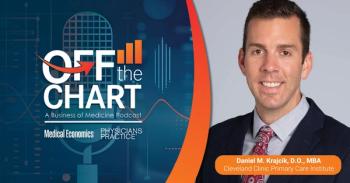
4 ways to rein in your practice’s hidden billing costs
Sometimes, the biggest financial dangers are the ones we don’t see.
Sometimes, the biggest dangers are the ones we don’t see. A hippo yawning might appear tranquil, but that yawn is actually
In physician practices, there are multiple billing pitfalls that threaten practice revenue. For every 10 physicians who provide care in the United States, nearly
But too often, practice leaders fail to spot these revenue traps. The result: low cash collections, higher-than-necessary billing costs, and threats to patient satisfaction.
Where do hidden billing costs typically exist-and how can practice leaders more effectively rein them in? Here are four common blind spots.
Benefits and eligibility verification. This is the starting point for billing support, and it’s rife with inefficiency. Manual transactions take
to perform, on average, and some last as long as
. Yet while most providers have adopted electronic eligibility and benefits verification, this billing process remains the
for medical providers to reduce administrative costs, at $3.4 billion.
Making the switch to electronic eligibility and benefits verification is about more than administrative efficiency. It can also reduce denials rework-especially when eligibility checks are run again prior to claim submission to ensure patients’ coverage is still active. Registration and eligibility errors are the root cause of
Claim status inquiries. Manual claim status inquiries are the
tracked by the Council for Affordable Quality Healthcare (CAQH). Why? Manual inquiries require 14 minutes of staff time, on average, to complete, according to the
. Electronic claim status inquiries, on the other hand, take just five minutes to complete. As a result, the savings opportunity in moving from manual to electronic status inquiries totals $2.6 billion among medical providers.
Out-of-pocket estimates. Three-in-four consumers use healthcare provider or health plan sites to research healthcare costs-especially millennials and Gen Z, according to a TransUnion
But while
Given the impact out-of-pocket estimates have on practices’ ability to engage patients in the cost of their care, practice leaders should consider:
· Investing in tools that calculate patients’ out-of-pocket costs at the point of registration
· Training front-end staff to have financial discussions with patients prior to the point of service
· Publishing prices for common procedures
· Equipping physicians with cost information so they may engage in cost discussions with patients
Cash posting. For physician practices, cash posting is tedious, highly manual, and relegated to entry-level staff. It takes staff significantly longer to process paper-based check payments than electronic payments, according to an Association for Finance Professionals
These are just some of the reasons why automating cash posting makes financial sense for physician practices. It’s an approach that also provides real-time visibility into payments, streamlines remittance advice management, more quickly identifies opportunities to better manage denials, and reduces the costs associated with medical billing. One specialty practice saved 13 hours per day by automating its cash-posting processes, increasing productivity and freeing up staff to focus on more value-added activities.
Removing the Blinders on Billing Expense
The amount of time spent on billing-related administrative tasks is a significant source of frustration for
Dan Richards is chief growth officer,
Newsletter
Stay informed and empowered with Medical Economics enewsletter, delivering expert insights, financial strategies, practice management tips and technology trends — tailored for today’s physicians.















